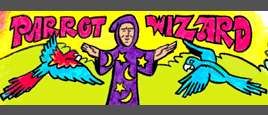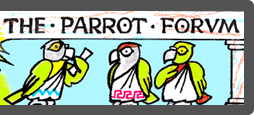We all know that cat saliva and scratches are fatal, but what about dog saliva and human saliva? There are many parrot owners out there who let their birds explore their mouths, eat off of their utensils, and even eat food that the owner has chewed
Is human saliva (or other animal's saliva) really toxic to our birds?
Human saliva is listed as poisonous to birds on this list http://www.birdsandpets.com/toxic.asp.
I've heard that it isn't toxic and won't actually kill a bird, but you can pass on certain germs (one website said cold germs?) and your bird could become sick if you're sick and don't realize it. And of course there's things such as e-coli that we can have small traces of that could make a bird seriously ill and eventually cause death.
I've also heard that there are some enzymes and other bacteria that are always present in human mouths that we need for digestion that birds have no immunity to and will make them very sick. I don't have any details on this though.
I've always read that the human mouth is one of the dirtiest places in the world (even compared to a dog that cleans themselves and eats whatever they can find, including feces and dead animals
I've personally never had the desire to have my bird explore my mouth. A lot of websites I came across say that it's hard to resist having a cute little bird exploring our mouths, but I've never had any problem resisting it! The closest my bird comes to my mouth is me giving him a kiss on the beak, sometimes he'll turn and nip my lip (not hard!) and that's too close for him being near my mouth for me. Other than that sometimes if I have something like a hard boiled egg I'll take a bite of it to make it smaller for him then give him the other piece. That's rarely though, I don't think it's worth the risk. I don't even use chopsticks for touch training that have been previously used!
Does anybody have any other information on this? Or any information for the other side of the debate saying that human saliva does not harm our birds, which is proven by the owners that let their birds explore their mouths throughout the bird's life?
What about dog saliva? Obviously a dog bite is likely to be lethal just because of the injuries it would cause, but what about letting your bird play with your dog's toys? And why exactly is a cat bite/scratch fatal?




